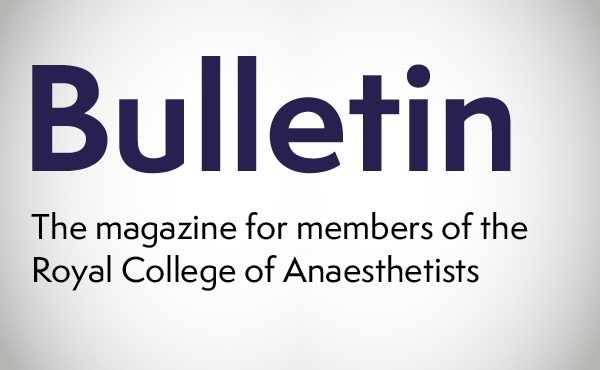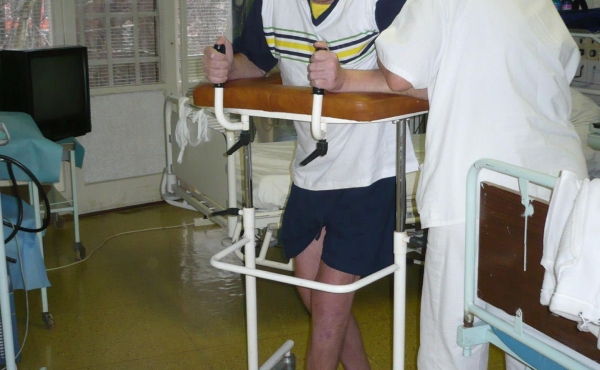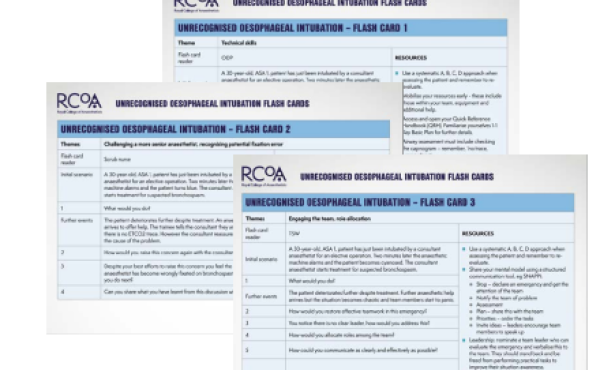- Bulletin: October 2022
- Updates
Centre for Perioperative Care (CPOC)
New guidance on the perioperative management of anaemia

Anaemia is a common finding in the perioperative pathway and is present in over 30% of patients having major surgery.1 It is also a poor prognostic indicator and is associated with a 20% increase in post-operative complications, including poor wound healing, increased infection rates and higher incidence of death.2
Anaemia is a modifiable risk factor. A Patient Blood Management (PBM) approach is recommended with early detection and treatment, minimizing intra-operative blood losses and optimizing the patient’s physiological response.
A shared decision making (SDM) framework early in the perioperative process opens a dialogue between patient and clinician about better treatment options, enhanced use of resources and reducing unwarranted variations in clinical practice.
What have we done?
The release of the ‘Guideline for Management of Anaemia in the Perioperative Pathway’ in September 2022 by CPOC aims to improve patient outcomes. CPOC has successfully published perioperative guidelines on diabetes3 and frailty4 that are already changing the way in which services are being delivered and implemented, using a whole pathway approach to improve outcomes.
This ambitious project required the collaboration of a large cross-specialty working group to develop an evidence- based guideline which encompasses the whole perioperative pathway. It incorporates guidelines which are often specialty specific (e.g NICE guidelines and British Society of Gastroenterology) and contains recommendations for patients of all ages undergoing surgery in elective and emergency settings. It was developed using a patient-centred approach championing individualised care.
Why is it important/why does it matter?
Reduce complications, improve efficiency ‘Marginal gains’ is a term used commonly in British Cycling, and a similar ethos can be applied to create a ‘better journey’ for the patient. Small yet significant improvements in clinical care can lead to dramatic improvements in patient outcomes and experiences. Using a whole pathway approach, our guideline aims to reduce complications, improve safety and create an efficient process.
Financial savings
Having patients who are fitter, better prepared and well informed should reduce same-day cancellations, improve theatre utilisation, reduce length-of-stay and provide a considerable cost saving.
Effective pre-operative anaemia management also provides a financial incentive for hospital trusts through the Commissioning for Quality and Innovation (CQUIN) scheme. It is estimated that a 60% uptake could save £3 million through lower blood transfusion rates, reduced use of critical care services and reduced bed days.5
What does the guideline recommend?
The guideline sets out multiple recommendations and ambitious standards of care which hospital trusts can use to improve patient care.
Examples include:
- All hospitals should develop pathways of perioperative care for surgical patients with anaemia.
- All hospitals should establish data capture systems to allow auditing against the metrics and recommendations provided.
- All patients referred for surgery who fulfil the NICE preoperative testing criteria should have a full blood count at referral to surgery or at first surgical consultation.
- All children should be screened for anaemia before procedures associated with a 10% risk of transfusion as early as possible in the pathway.
- All patients undergoing surgery with a clinical finding of anaemia should have documentation of the type and likely cause of anaemia.
- All patients with anaemia having a major operation (with expected blood loss of more than 500ml or 10% blood volume) should have a documented plan for preoperative, intraoperative and postoperative management of anaemia.
- All patients undergoing surgery with anaemia or at risk of anaemia should be proactively provided with information (paper and/or digital) regarding causes and treatment of anaemia including options for blood transfusion.
- All staff working in perioperative settings should have training in anaemia, PBM and blood transfusion.
Summary
Patients with anaemia have an increased risk of perioperative complications. Endorsing a pathway approach through implementation of our recently published anaemia guideline aims to improve patient outcomes, reduce length of stay, create efficient pathways and save money. Personalised care should be prioritised throughout patient’s perioperative journey.
References
- Munting KE, Klein AA. Optimisation of pre- operative anaemia in patients before elective major surgery – why, who, when and how? Anaesthesia. 2019 Jan;74 Suppl 1:49-57. doi:10.1111/anae.14466. PMID: 30604424.
- Kalra, S.K., Thilagar, B., Khambaty, M.et al. Post-operative Anemia After Major Surgery: a Brief Review. Curr Emerg Hosp Med Rep 9, 89–95 (2021).
- Guideline for perioperative care for people with diabetes mellitus undergoing elective and emergency surgery. CPOC, 2021.
- https://cpoc.org.uk/sites/cpoc/files/documents/2021-09/CPOC-BGS-Frailty…https://cpoc.org.uk/sites/cpoc/files/documents/2021-09/CPOC-BGS-Frailty-Guideline-2021.pdf. CPOC, 2021.
- CCG6 Commissioning for Quality and Innovation (CQUIN): 2022/23.
Key messages
- There is poor awareness of dietary insufficiencies and absorption problems among the public and health professionals.
- Treatment of pre-operative anaemia can improve outcomes.
- A preoperative risk assessment needs to be performed for major surgery.
- Shared Decision Making is important in the patient’s perioperative pathway.
Management of Anaemia in the Perioperative Pathway Guideline
More from the Digital Bulletin
Health Services Research Centre Annual Report
- Bulletin: October 2022
- Editorial
DrEaMing after surgery
- Bulletin: October 2022
- Editorial
Tackling unrecognised oesophageal intubation
Are you enjoying the Digital Bulletin?
It's now very easy to opt-out of the print version and only receive the digital Bulletin. Log in/sign up for My RCoA untick the print option and tick the digital option.





